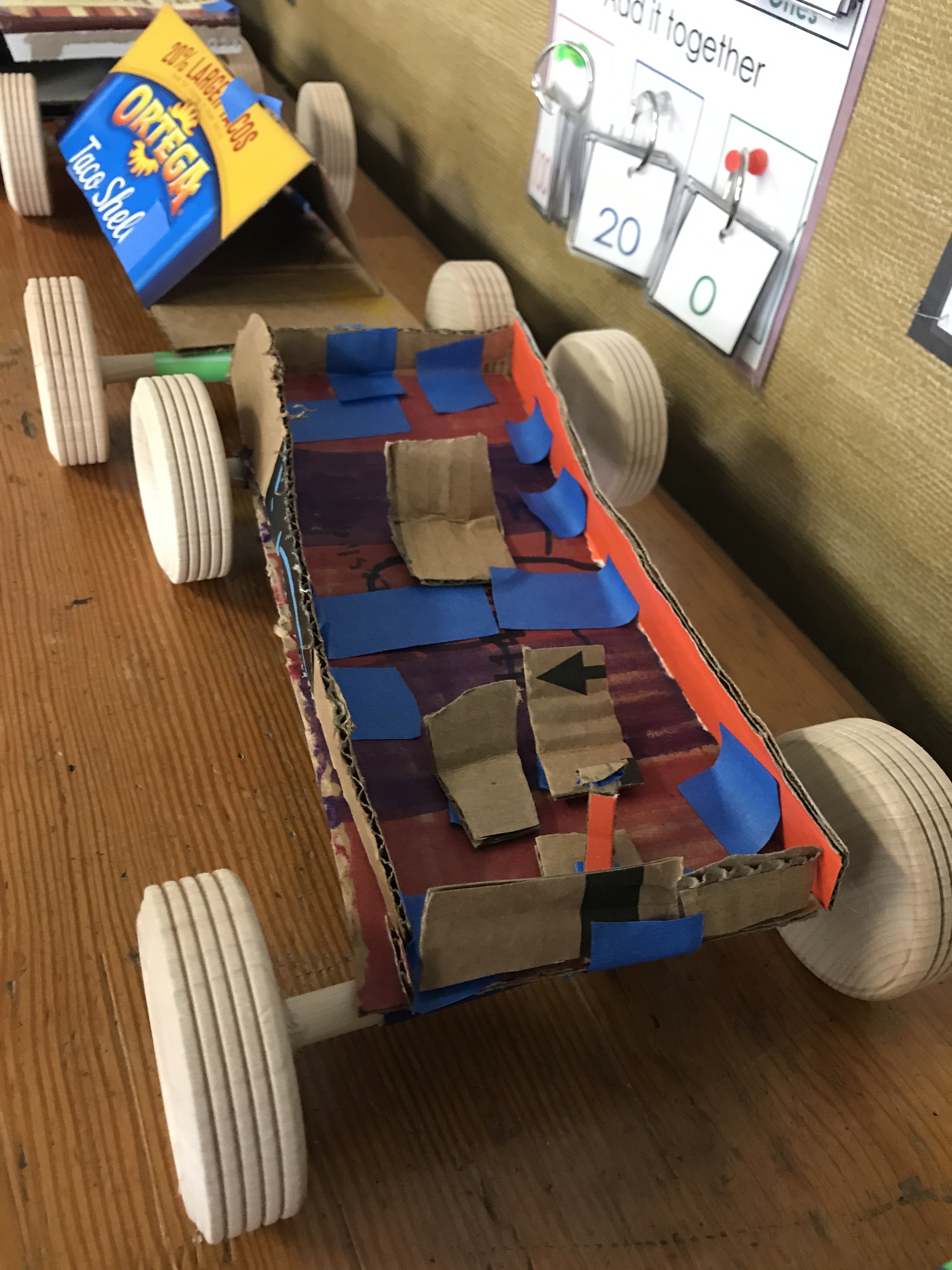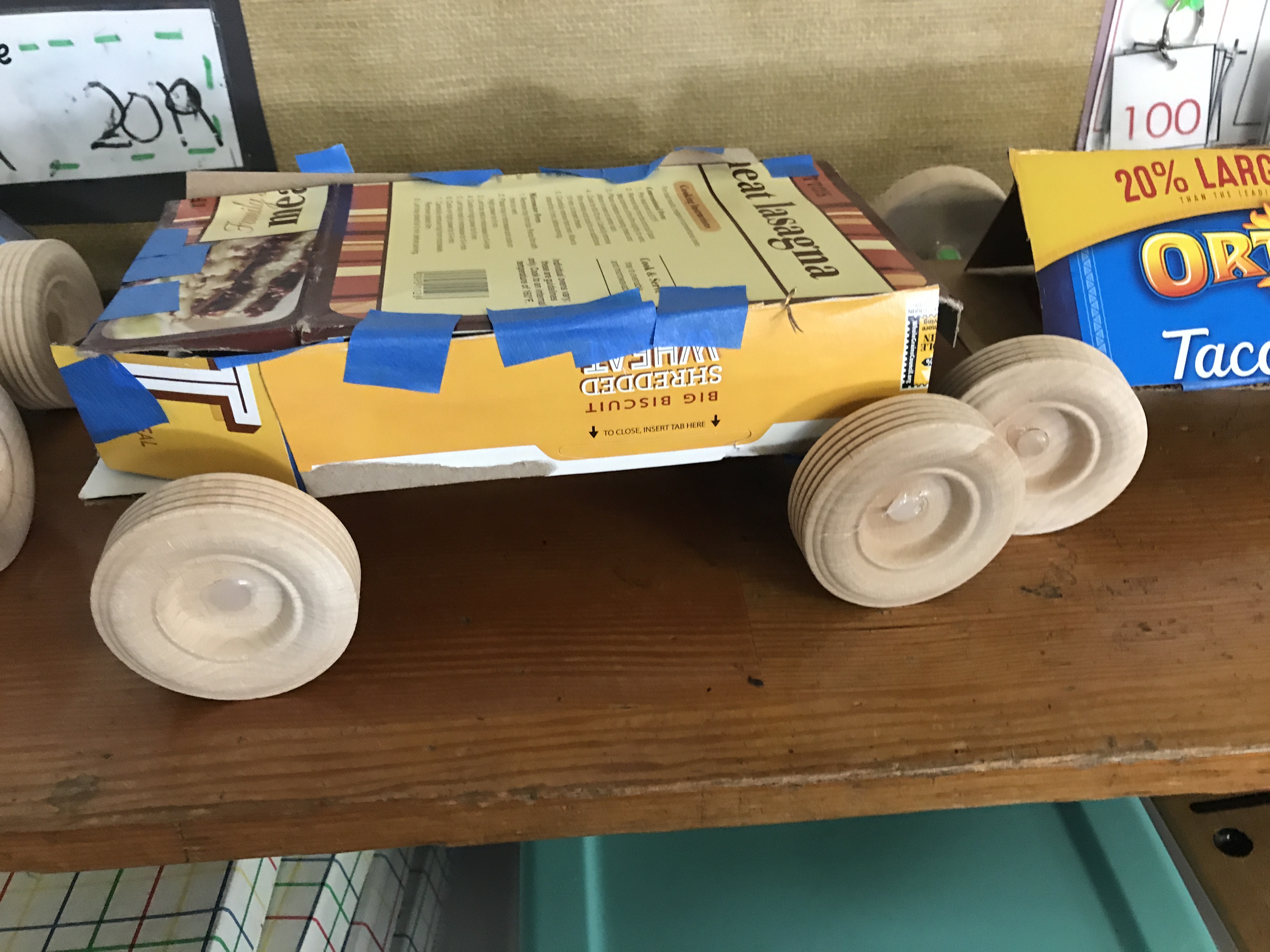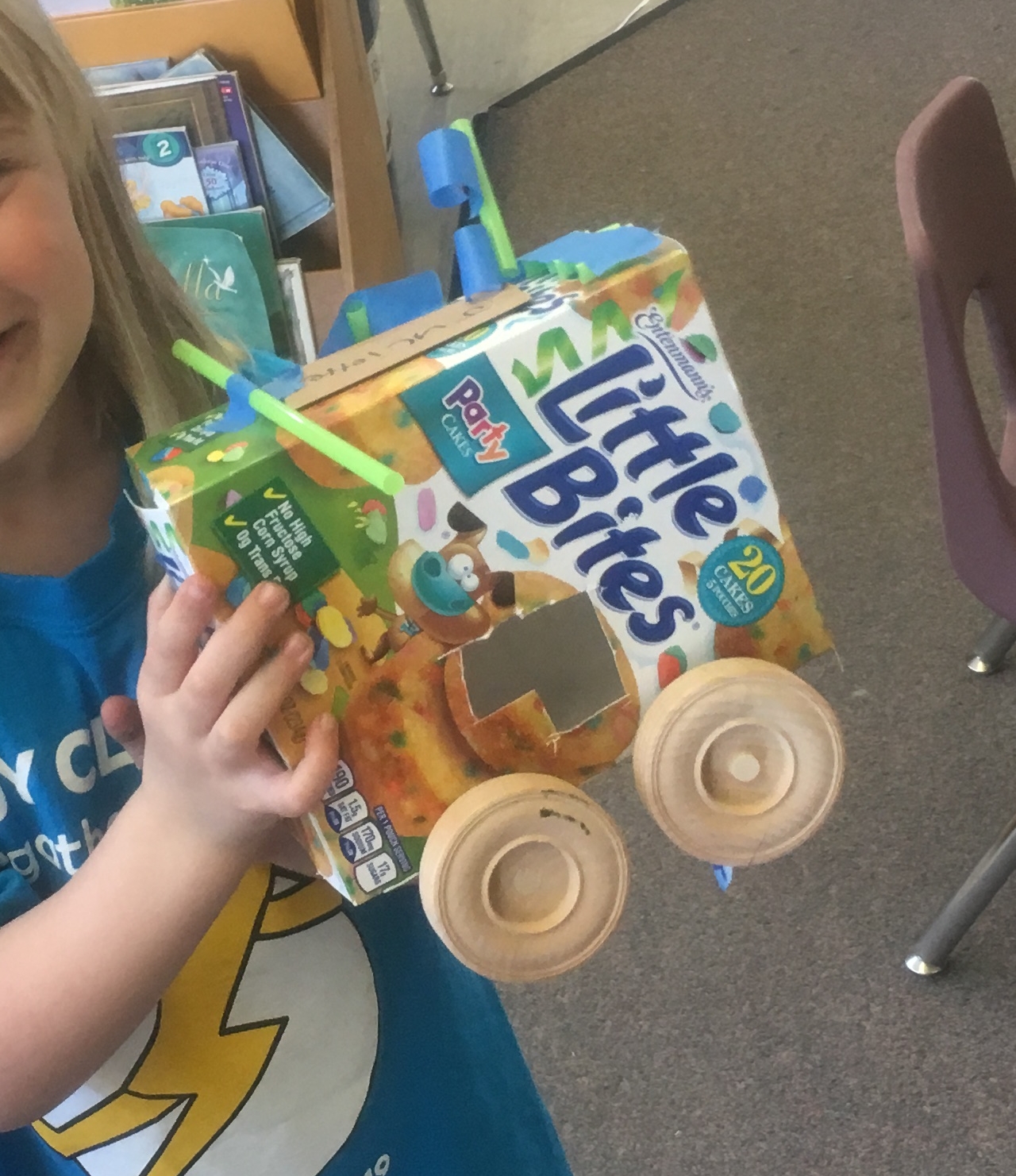Build a Cart – Push & Pull (Kindergarten)
Students use pre-made axels with wheels attached to build a cardboard cart.
Students attach a Kibo Robot to pull their cart over a ramp.
NGSS
Performance Expectation. K-PS2-2. Analyze data to determine if a design solution works as intended to change the speed or direction of an object with a push or a pull.
Clarification Statement: Examples of problems requiring a solution could include having a marble or other object move a certain distance, follow a particular path, and knock down other objects. Examples of solutions could include tools such as a ramp to increase the speed of the object and a structure that would cause an object such as a marble or ball to turn.
Assessment Boundary: Assessment does not include friction as a mechanism for change in speed.
Disciplinary Core Ideas. PS2.A: Forces and Motion.
- Pushes and pulls can have different strengths and directions.
- Pushing or pulling on an object can change the speed or direction of its motion and can start or stop it.
Crosscutting Concepts: Cause and Effect: Events have causes that generate observable patterns.
Disciplinary Core Ideas. (Engineering)
- ETS1.A: Defining and Delimiting an Engineering Problem
Asking questions, making observations, and gathering information are helpful in thinking about problems. (secondary to K-ESS3-2) - ETS1.B: Developing Possible Solutions
Designs can be conveyed through sketches, drawings, or physical models. These representations are useful in communicating ideas for a problem’s solutions to other people. (secondary to K-ESS3-3)
Cart Materials List
- Wheels: 2-1/4″ inch Treaded Wooden Toy Wheel at 3/4” inch thick with a 3/8” inch Hole
- Wooden Dowels: 3/8″ diameter, 6″ length
- Extra-Wide Smoothie Straws (1/2″ diameter)
- Cardboard (recycled cereal and tea boxes)
- Masking Tape



